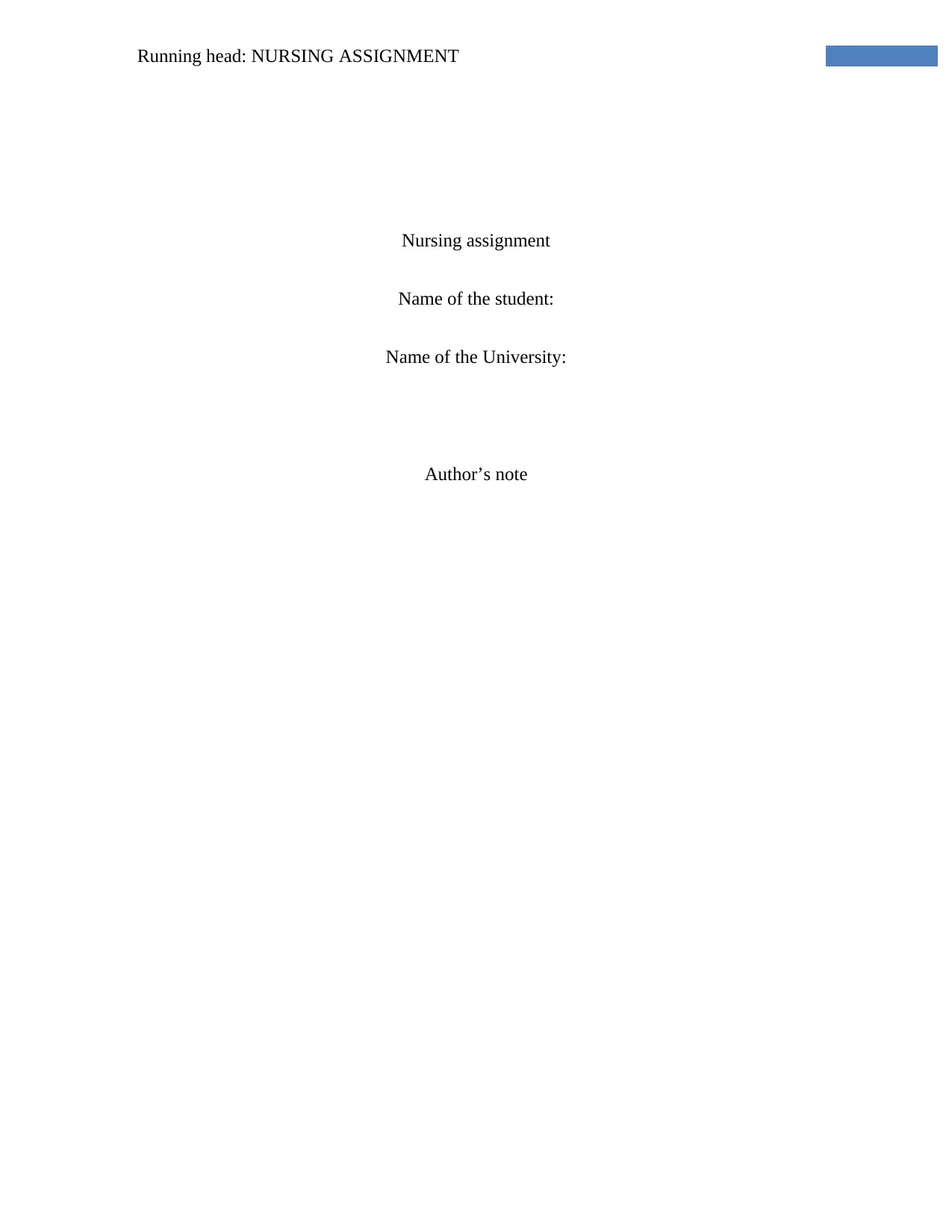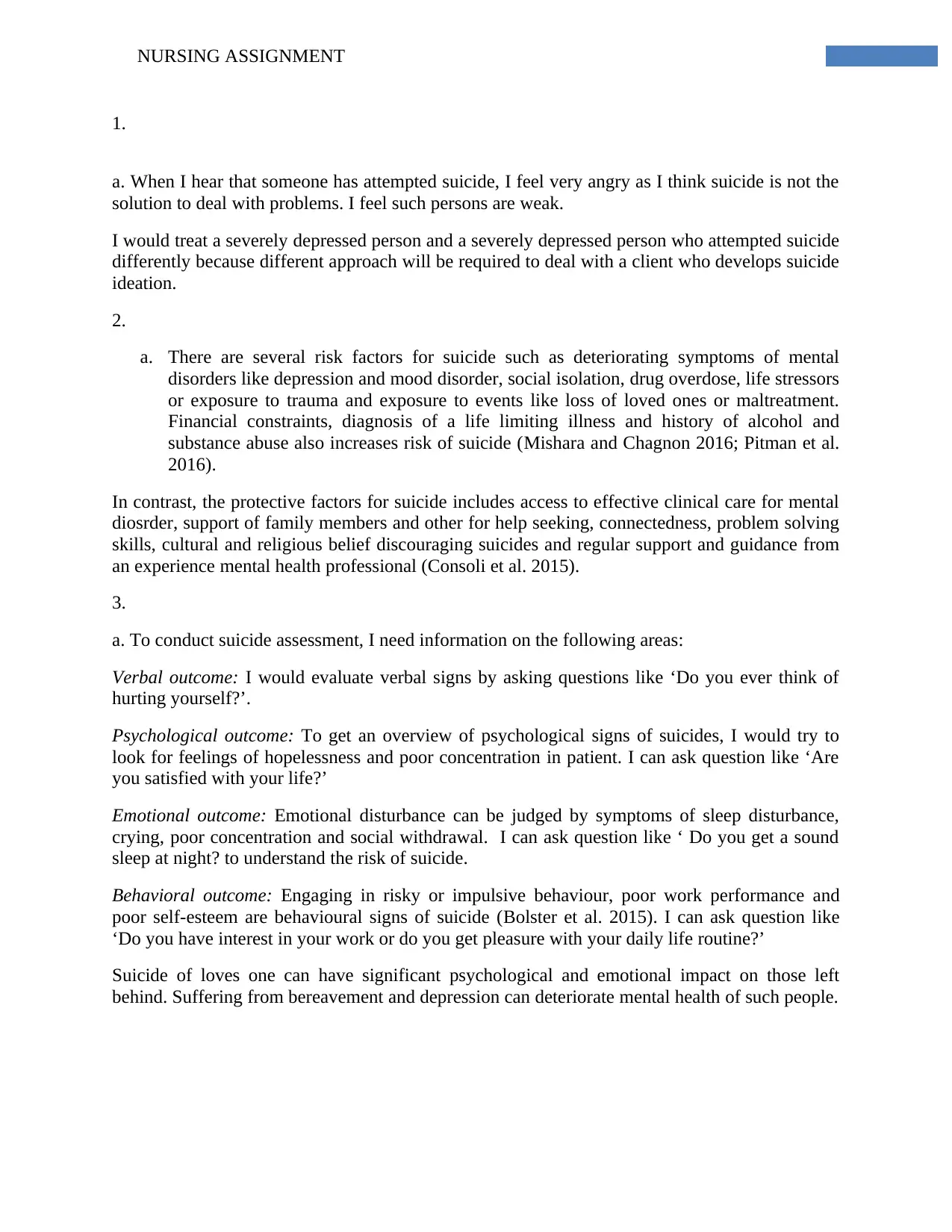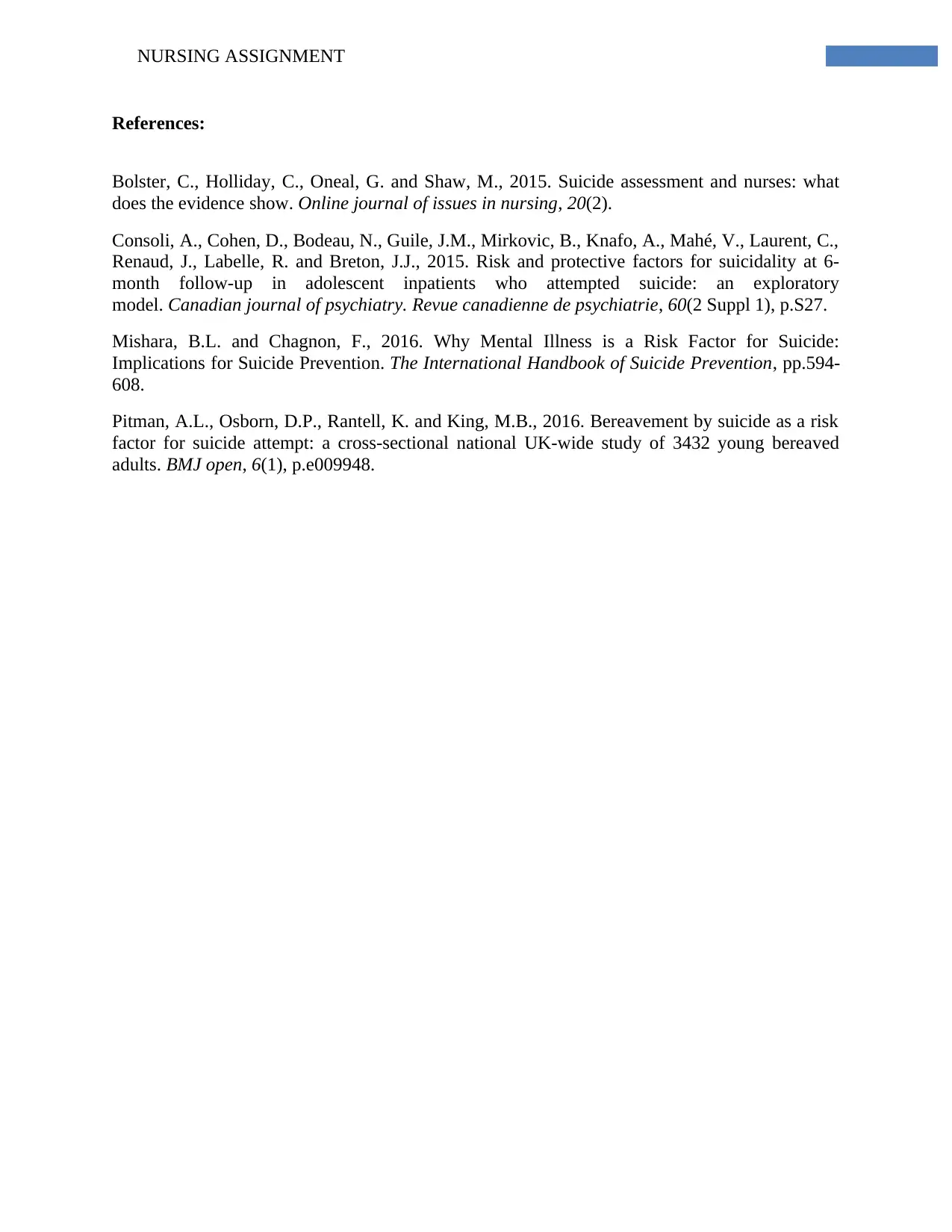University Nursing Assignment: Suicide Risk, Assessment, and Factors
VerifiedAdded on 2023/06/10
|3
|654
|214
Homework Assignment
AI Summary
This nursing assignment addresses the critical topic of suicide, focusing on the student's understanding of suicide assessment, risk factors, and intervention strategies. The assignment begins with a personal reflection on the student's emotional responses to suicide attempts and the need for differentiated approaches based on the severity of depression and suicidal ideation. It then delves into the identification of various risk and protective factors associated with suicide, including deteriorating mental health symptoms, social isolation, life stressors, access to care, and cultural beliefs. The core of the assignment involves a detailed exploration of the suicide assessment process, emphasizing the evaluation of verbal, psychological, emotional, and behavioral outcomes through specific questioning techniques. Finally, the assignment acknowledges the significant psychological impact of suicide on loved ones, highlighting the importance of addressing bereavement and depression in those left behind.
1 out of 3










![[object Object]](/_next/static/media/star-bottom.7253800d.svg)